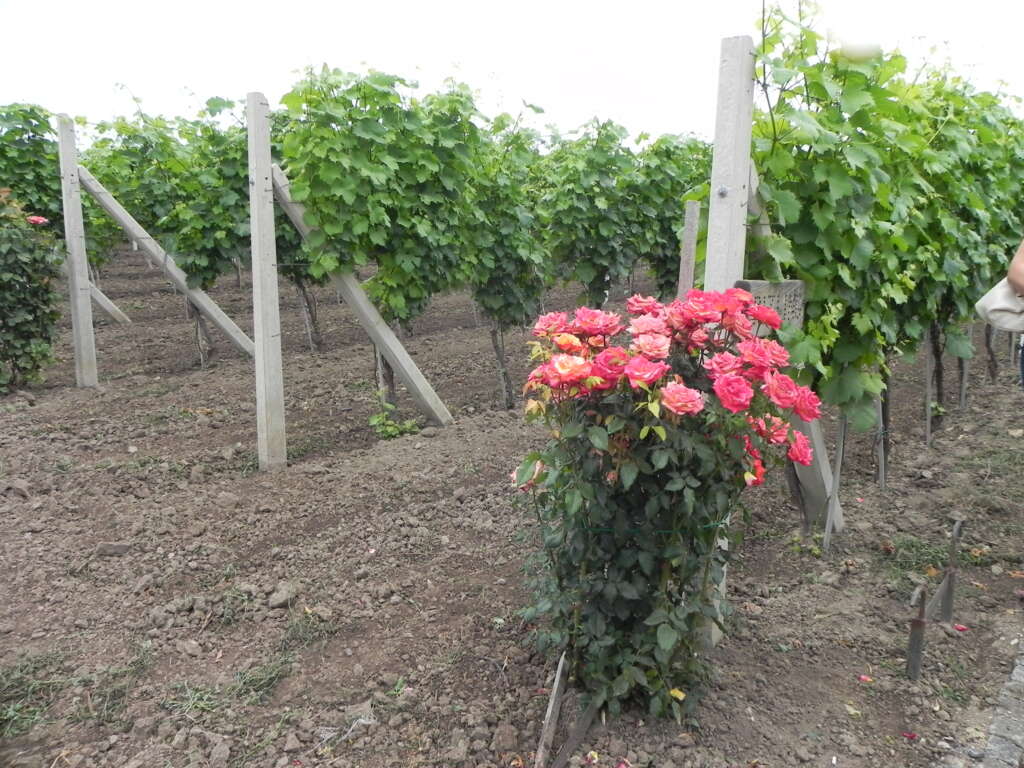It is common to see rose bushes at the end of vineyard rows. Planting roses at the end of vineyard rows was a method used by winegrowers to detect the fungus Uncinula necator (syn. Erysiphe necator), which causes the fungal disease known as powdery mildew.
Powdery mildew attacks young developing shoots, foliage and, at advanced stages, the grapes, damaging the fruits and destroying the production.
The rose is more susceptible to powdery mildew and shows attack symptoms a week or so earlier. These symptoms alert winegrowers to take preventive measures such as spraying their plants or applying sulphur dust.
Powdery Mildew on Grapes
Nowadays, modern methods allow winegrowers to accurately predict the occurrence of powdery mildew infestation and take preventive measures. Nevertheless, the use of roses in the vineyard is increasing among winegrowers. Yellow roses are planted near white grape varieties and red roses near red grape varieties. Moreover, plant geneticists have even created new rose varieties giving them the name of the grape variety for which they are intended.
So don’t be surprised if you will soon come across rose plants called ‘Xynisteri’, ‘Yiannoudi’ or ‘Maratheftiko’.
Dr Andreas Emmanouel

